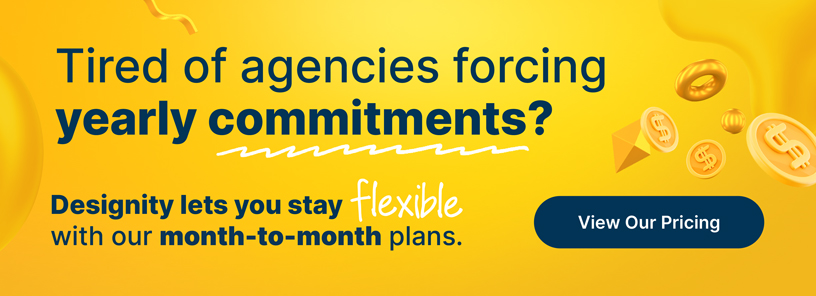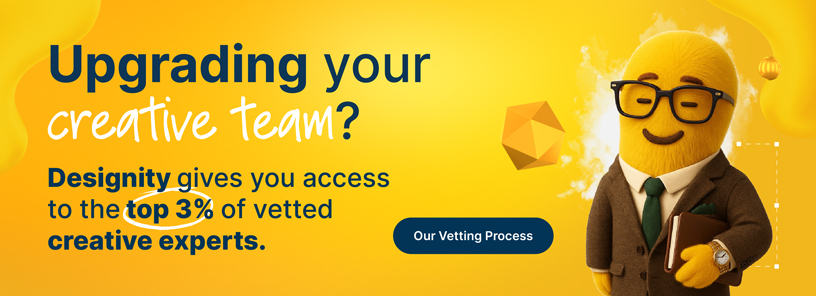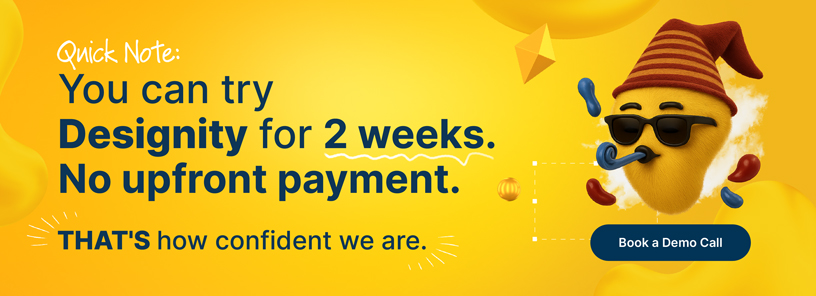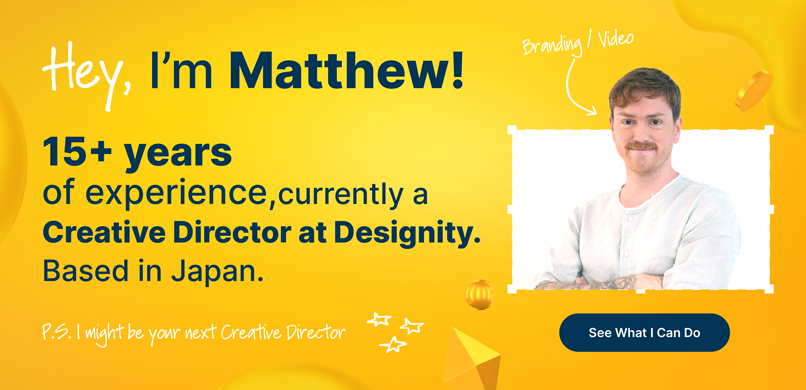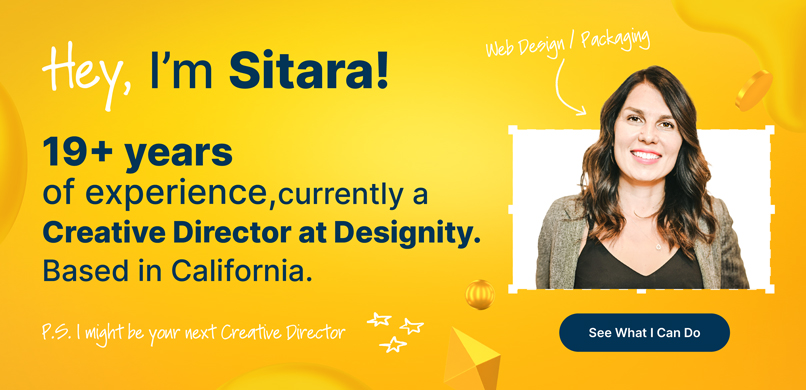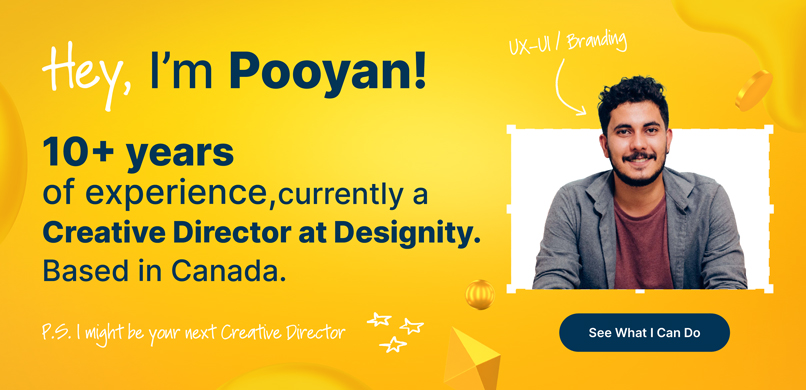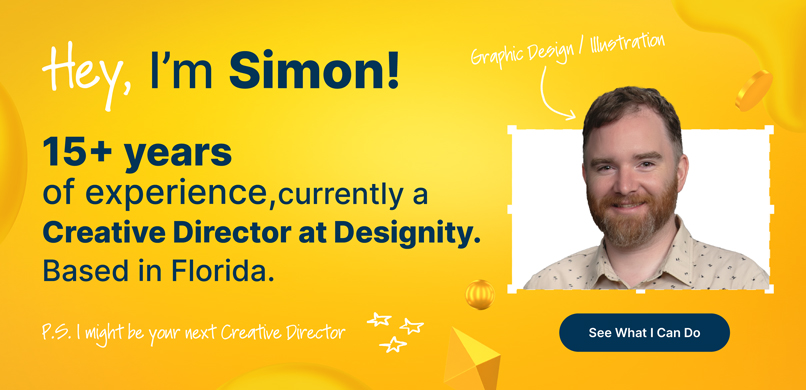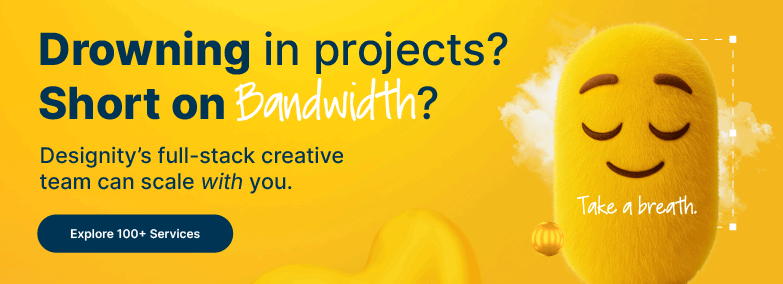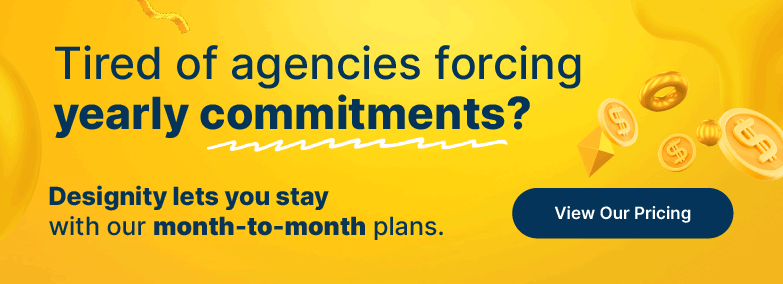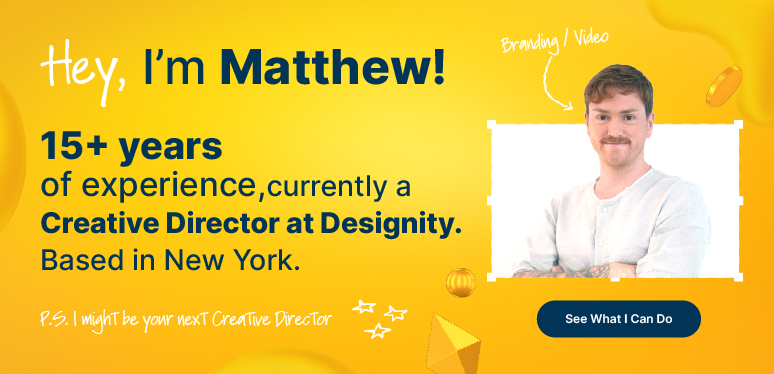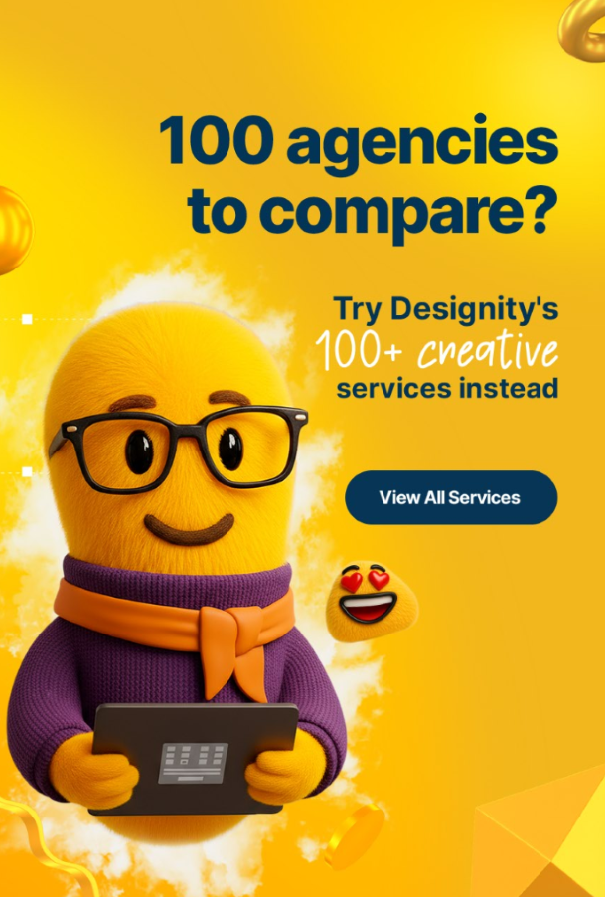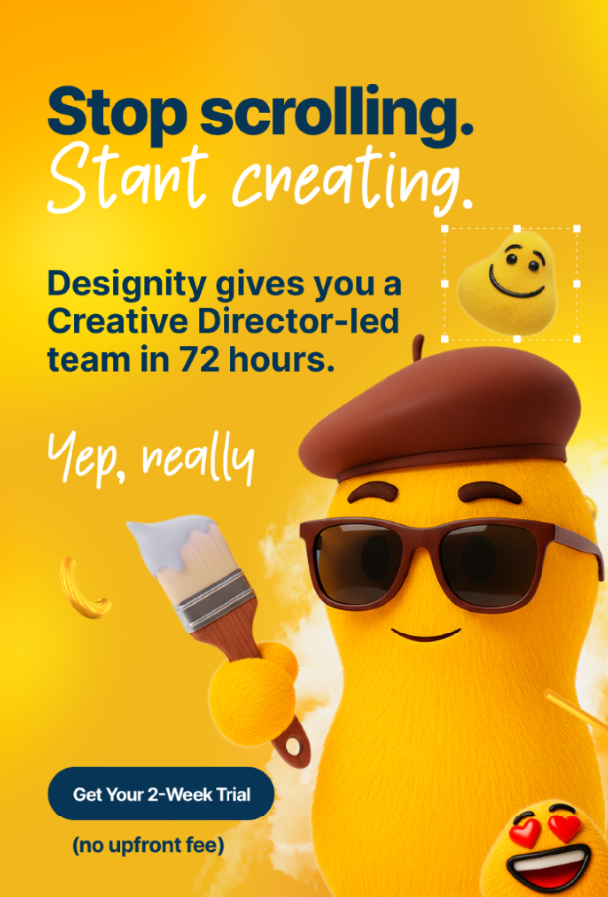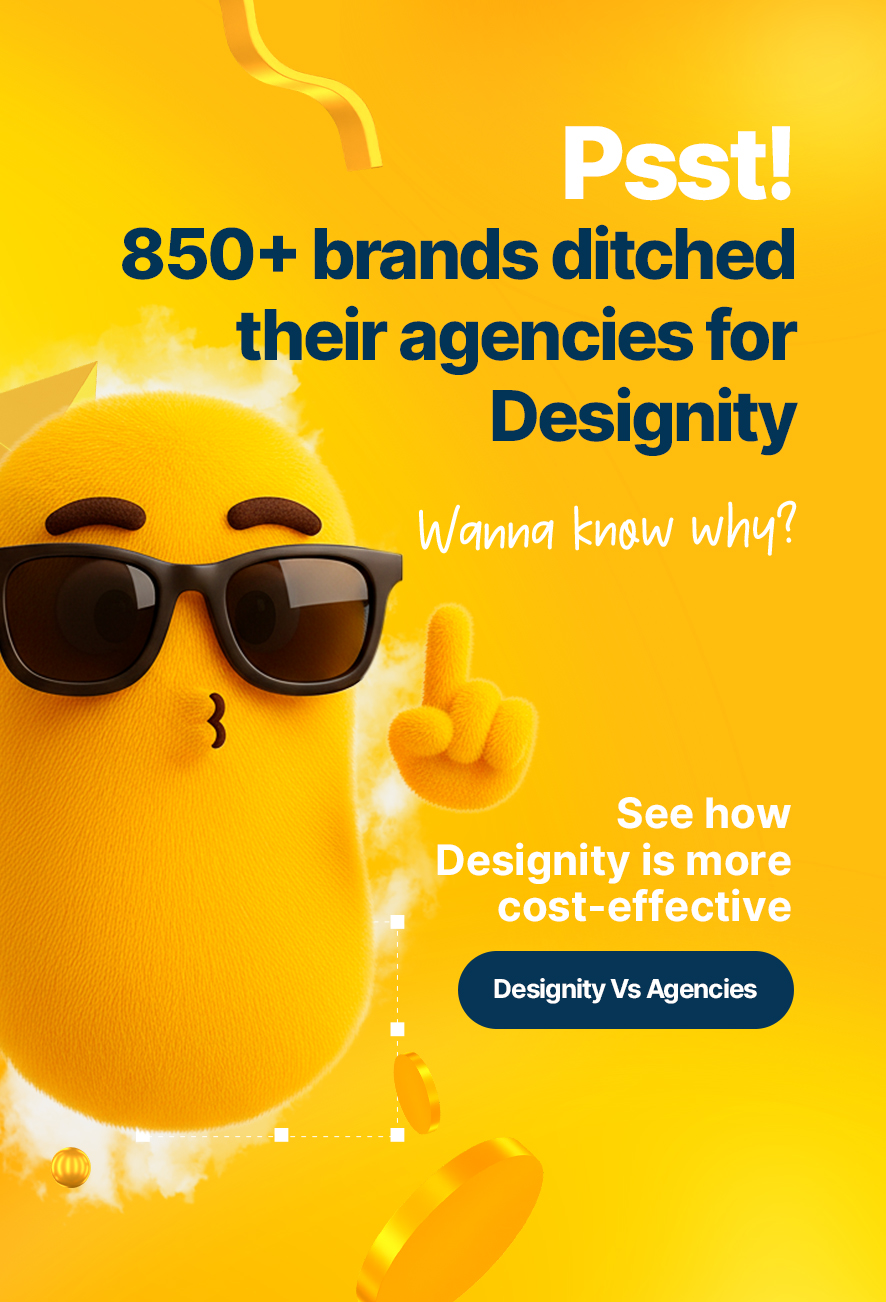There’s a bit of a controversy over AI ethics lately.
If you were spending some time on the internet last September, you might have heard some rabble about Colorado State Fair’s annual art competition.
The artist who won first place in the painting category, Jason Allen, caused some backlash among his peers when it was discovered that his entry was created entirely by the AI art generator, Midjourney.
Was it cheating? Jason Allen says no. He disclosed his painting’s origin right on his entry form for all to see. It won despite that.
So, it’s art, right?
Some artists agree, some don’t. So, what is everyone worked up about?
In this blog, we're going to dive into AI designer ethics and determine when using AI crosses the line into sticky territory.
What is an AI Art Generator?

AI art generators are software that use artificial intelligence technology to create images.
You type in a prompt, like “lady waiting for bus” or “flamingo beach party,” and the AI spits out a relevant image within a few seconds. The results vary and can range from amazing to hilarious to nightmare fuel.
It works by using algorithms (written by artists) that direct the computer program to not only follow your written prompt but to do so with a certain aesthetic that it creates by analyzing the millions of images in its data bank.
The AI takes your prompt and merges it with the aesthetics of those images stored in its “brain” to generate a new image for you. The more images it can analyze, the more machine learning can take place and the better the AI gets at its job.
It’s a pretty cool thing, but the question remains …
Is it truly art?
And when it comes to graphic designing, is it cheating to use AI art generators like Midjourney or NightCafe to generate work for your clients?
What is Art?
We can start this discussion by first defining “art” itself.
If you look it up in the dictionary (or Google, whatever) you’ll see that it’s defined as “the expression or application of human creative skill and imagination, typically in a visual form such as painting or sculpture, producing works to be appreciated primarily for their beauty or emotional power.”
Read it again.
Especially the first part; “the expression or application of human creative skill and imagination.”
Leaves some room for interpretation, doesn’t it?
Controversy over the definition of art isn’t anything new either. When Jackson Pollock came onto the scene with his “drip period” in the late ‘40s, the art world was thrown for a loop.
Is this art? Is flinging paint at a canvas really art?
The buyers of his paintings who paid tens of millions of dollars certainly seemed to think so.
We can go back even further to the stuffy 1910s when artist Marcel Duchamp (under the alias R. Mutt) submitted his readymade sculpture, “Fountain,” for an exhibit of the Society of Independent Artists in New York.
There was plenty of laughing that day, because “Fountain” was a straight-up urinal turned upside down.
No, seriously.
It’s a urinal. As in something that was supposed to be in the men’s bathroom.
But when it was thrown out of the exhibit because the board members assumed it was a joke, the artist resigned from the SIA board out of protest.
It wasn’t a joke. He was serious. To him, it was art. Not a joke, and certainly not cheating the system.
Art.
And Duchamp’s “Fountain” was only a small part of a larger, very experimental early twentieth-century art movement known as “Dadaism.” The whole point of the Dada (French colloquial for hobby horse) movement was to explore new forms of art or “anti-art” and challenge the accepted definition of it. This led to many interesting works of art that led many to ask …
Is it really art?
Again, some folks agree and some don’t.
Should I feel bad for using AI in my work?

When it comes to design, however, it’s usually not enough to hand your client an AI logo or a urinal and call it a day.
Most AI images, while very cool, lack the je ne sais quoi that a human brain can give. If you’ve seen AI logo generators, you know all too well how generic the results can be.
AI art can often be bizarre too, a non-human machine’s attempt at replicating human art that sometimes leads us down the uncanny valley. (Seriously, ask an AI generator to draw you a human hand. We’ll wait).
As of now, AI technology is not advanced enough to create client-worthy marketing collateral without some human assistance. It doesn’t understand target audiences or how to differentiate from competitors or how to fit with a brand.
You’ll have to adjust it to your client’s brand and that takes human intelligence and understanding.
If you’re a typical designer, you’ve got several clients and all of them are wanting more and more of your time, your energy, and your creativity. Especially now, when so many in-house designers have been laid off and marketers are looking to us or freelancers to fill that void.
All of that can be draining, especially if it’s what you do every day of every week of every year.
Many designers are using AI tools to help them during the design process rather than having the AI do all of the work for them. This is where AI is the most beneficial (and fun, let’s be honest), for designers.
Stuck on something? Type a prompt into the generator and let it churn out some inspiration for you.
By using the AI images as a springboard for your own creative ideas, you can quickly create mood boards for your clients or give yourself an image to tweak into something that fits your client’s needs and brand.
No shame in that game.
AI can and should be another tool in your arsenal, something to make your life easier and help you finish your work faster.
<div class="c-blog_comp-cta cc-component-2"><div class="c-blog_comp-cta-left"><div class="c-blog_comp-cta-left-wrap"><img src="https://global-uploads.webflow.com/61cdf3c5e0b8155f19e0105b/63695243d096983691046ac3_Potential-Creative.png" loading="lazy" alt="" class="c-blog_comp-cta-left-img"></div></div><div class="c-blog_comp-cta-right cc-dark"><div class="c-blog_comp-content"><div class="c-text-wrapper cc-mb-32"><div class="c-title-4 cc-bold"><strong>Like to work as a freelancer with consistent income?</strong></div></div><div class="c-text-wrapper"><div class="c-text-2">Designity's collaborative model is designed to give you all of the perks of being a freelancer without the income instability.<br></div></div></div><div class="c-blog_comp-wrapper"><a href="http://designity.com/creatives" target="_blank" class="c-button w-button"><strong>Join Our Creative Community</strong></a></div></div></div>
So, are AI art generators ethical or what?
Let’s get the obvious out of the way.
If the AI-generated image makes use of other copyrighted images (a giant Garfield the cat, for example) or is a blatant ripoff of another artist that could open up your client to potential legal action, then of course, it is unethical, and that image should not be used.
If we have to give an answer other than that, then, unfortunately, our answer will have to be vague.
It all comes down to the context of the image’s use and the intention of the designer.
If you generate a logo, use it for inspiration, then design a masterpiece based on that, and send it right off to your client, some might call it cheating.
But what if your client loves it?
Then you did your job, so …
The debate continues.
The bottom line is, if you feel like using AI to generate work for clients is cheating, then don’t do it. Feel free to wear your judgy pants, but keep them on in private, because art and its creation are subjective and what one person considers a “creation” may not be the same to others.
As long as you feel you’re giving your best work to your clients, you’re not stealing anyone else’s work, and your clients are happy with the results, then design however you’d like, using whatever tools you like, free of guilt.
As long as you don’t turn in a urinal.
How do you use AI art in your work?
.webp)

